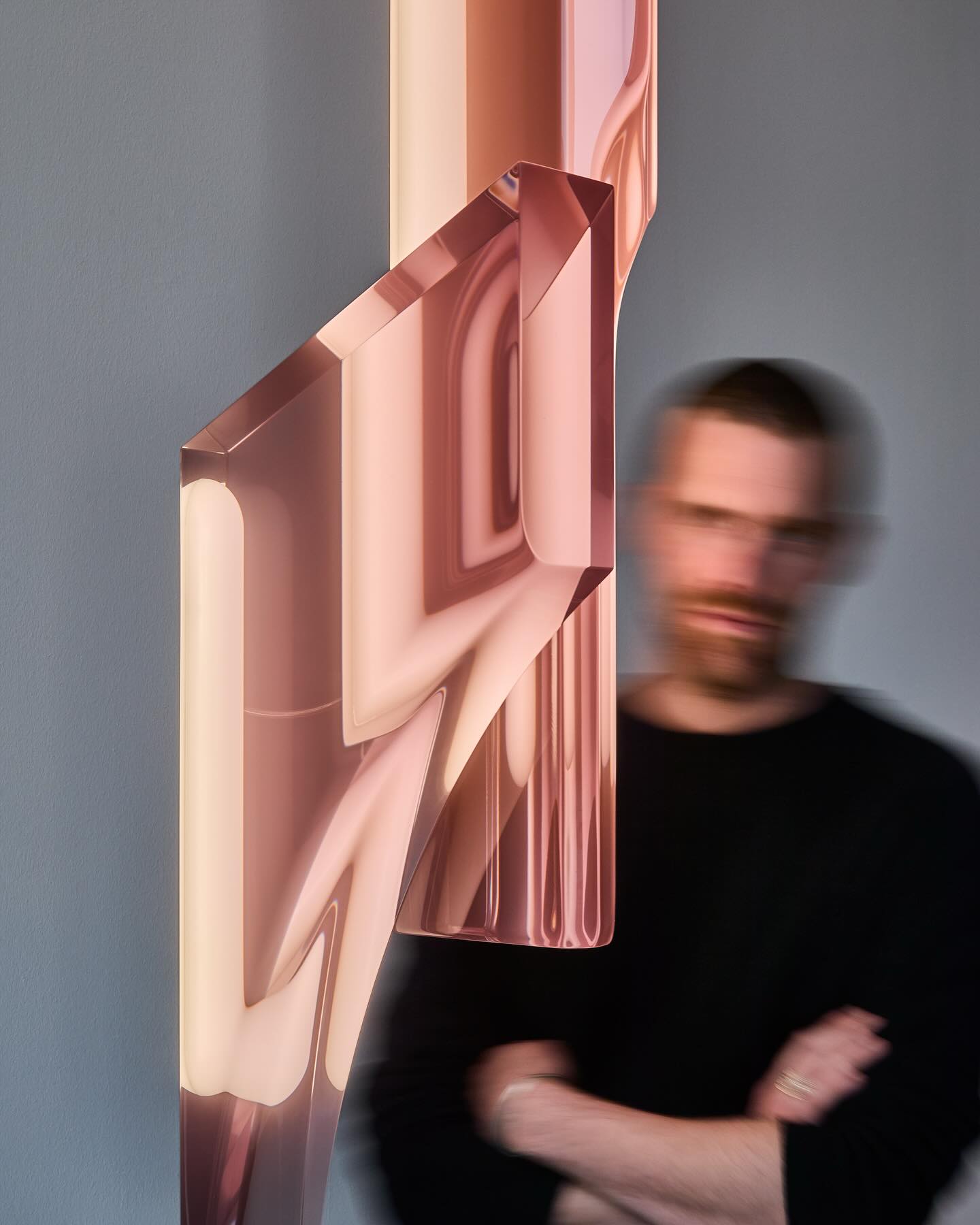
Between Function and Folklore, The Work of Laurids Gallée
von @industrialkonzept Team
·
There’s a question that often follows me quietly during moments of transition: do we choose the city we live and work in, or does the city choose us? A city's identity isn't just found in its aesthetics, but in what it offers — or withholds — from those who pass through it. Every place speaks its own language, carries its own rhythm — a kind of energy that shapes how we live, create, and connect. And just like in art, finding the right environment to grow in life is never a given. Some cities light a spark in us, others dim it. Some pull us close only to push us away, while others feel like home before we even know why. Migration has always been a reflection of this, more often than not driven by desperate, even tortured, motivations: the search for opportunity, freedom, a future. But what if now — when we appear to have more freedom of choice — our mobility is simply a more subtle, but no less deep, kind of searching?
With this in mind, it's impossible not to mention Laurids Gallée — a designer and artist who left his native Vienna to settle in Rotterdam several years ago. He describes the city as radical and grounded, driven by a strong work ethic and a contagious collective energy. “In Rotterdam, you really feel like anything is possible,” he says. “There’s a creative hunger that pulls you in and pushes you to put yourself out there.” His path to art wasn’t straightforward. It began unexpectedly at the age of 21, during his anthropology studies at the University of Vienna. From that moment, things began to unfold naturally. Creativity found him almost by surprise, and he gradually developed a trained eye and growing sensitivity — skills later refined at the Design Academy Eindhoven. Raised in an environment filled with artists, imagery, and objects charged with meaning, Gallée absorbed a visual language early on — one that now forms the foundation of his practice.

Images 1 and 2 from left by Titia Hahne | Image 3 on the right, photo by Mathijs Labadie
Laurids Gallée first gained wider recognition through his work with resin — a material that offers him complete creative control. From shape and color to translucency, texture, and surface finish, every detail can be meticulously defined, resulting in objects that fully reflect his vision. It’s this potential for total manipulation that captivates him. For Gallée, materials should be treated like gold: with respect, intention, and care. He believes design must be deliberate and thoughtful, and that a piece should be produced only once or in very limited editions. When crafted with purpose, he says, an object can become something truly unique — built to last for centuries. Despite its synthetic nature and inherent limitations, resin has become, in his hands, a refined and expressive medium.

Photo by Mathijs Labadie
Over time, Gallée’s embraced materials like solid oak and pine, enriched with pigments and acrylic paint. This shift has given rise to a more layered and expressive narrative, where symbolism and representation merge within everyday objects — depicting scenes, cultural references, and evocative details that invite contemplation. His techniques are intricate and time-intensive, but it’s precisely this commitment that has fueled increasingly ambitious and meaningful projects.
In 2024, at Milan Design Week, Laurids Gallée presents Arcadia — a project designed in collaboration with Dolce & Gabbana Casa. Inspired by the movie Italy of the 1950s and 60s, when La Dolce Vita represented an idealized image of the ideal vacation, Arcadia navigates the dialectic between dream and reality, collective memory and constructed image. Its center is a desk, and this desk is adorned with oil paintings of seemingly trivial subjects — clouds, umbrellas, cocktail glasses. The work joyously celebrates Italian cultural heritage — its architecture, its landscape, its cuisine — and at the same time upsets the stereotypes concocted by mass culture. Every drawer is treated as a storytelling device, where concealed objects within them invite discovery and interpretation. With a mix of nostalgia, irony, and historical richness, Gallée reinterprets la dolce vita in a twenty-first-century perspective — one that both criticizes and sentimentalizes.
In 2025, Laurids Gallée deepens his connection with the fashion world by unveiling a new project during Milan Design Week: a scaffolding for Gucci Bamboo, where he once again explores the relationship between form, structure, and meaning through his signature aesthetic. That same year, his vision for a more culturally vibrant Rotterdam begins to materialize. As part of the inaugural Rotterdam Biennial, Gallée presents Cairn — a series of monumental resin lights created in collaboration with the design gallery Collectional. Composed of sculpted blocks, each one meticulously sanded and polished to reveal translucent, fluid, almost primordial surfaces, Cairn blends material strength with a poetic and refined design language.
Today, Laurids Gallée has created a vision that extends far beyond functionality. His practice is fluid and interdisciplinary, moving with ease from installation to sculpture to objects released from utility's constrictions. Drawing on traditional and folkloric sources in his practice, he reworks them anew in materials in order to create a distinct and strongly personal visual vocabulary.
In this journey, Rotterdam is not merely the city in which he lives — but the city he has selected — or perhaps it has selected him — wherein to grow, to test boundaries, and further discover himself. For sometimes, it is in relocating cities that we discover new aspects of ourselves.
__
Words: Simone Lorusso







